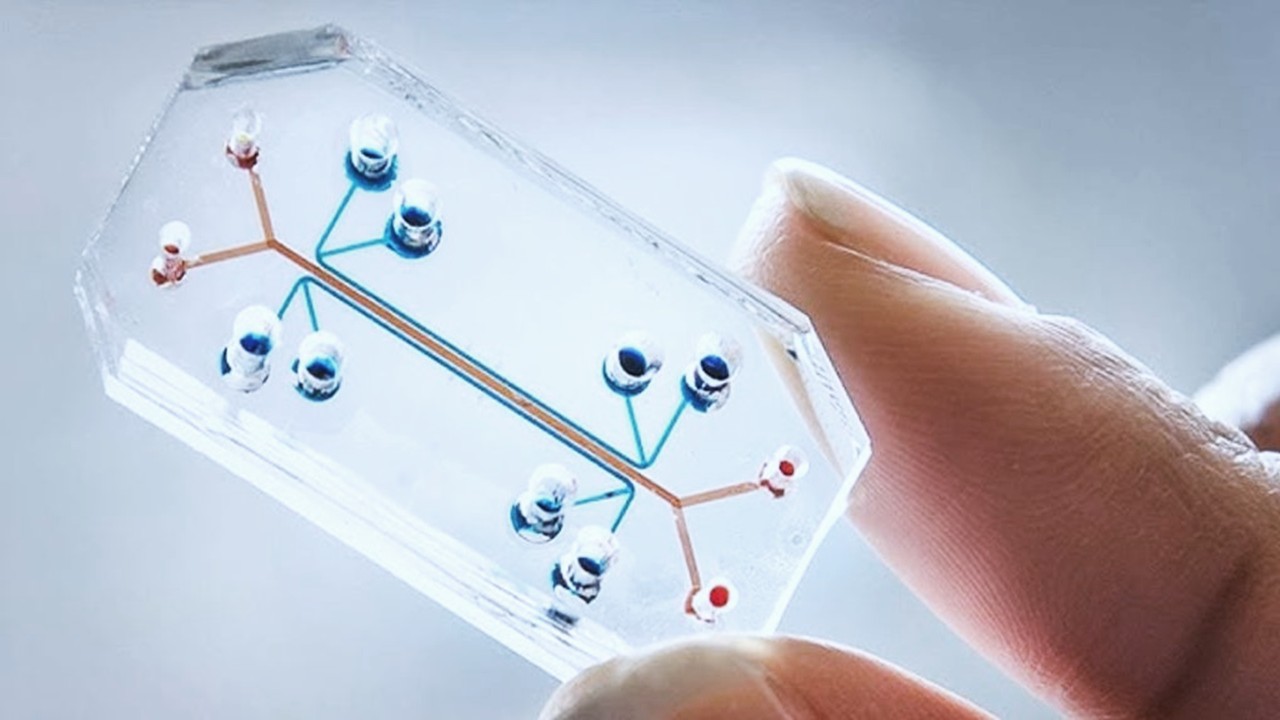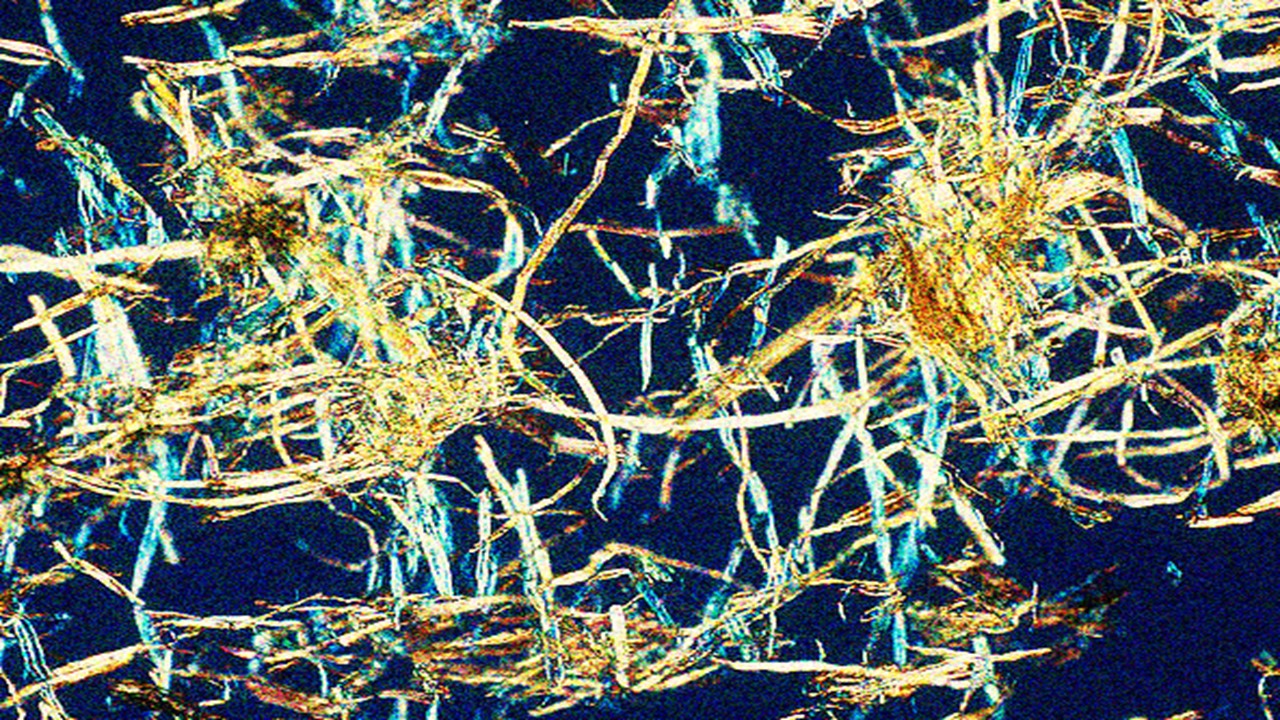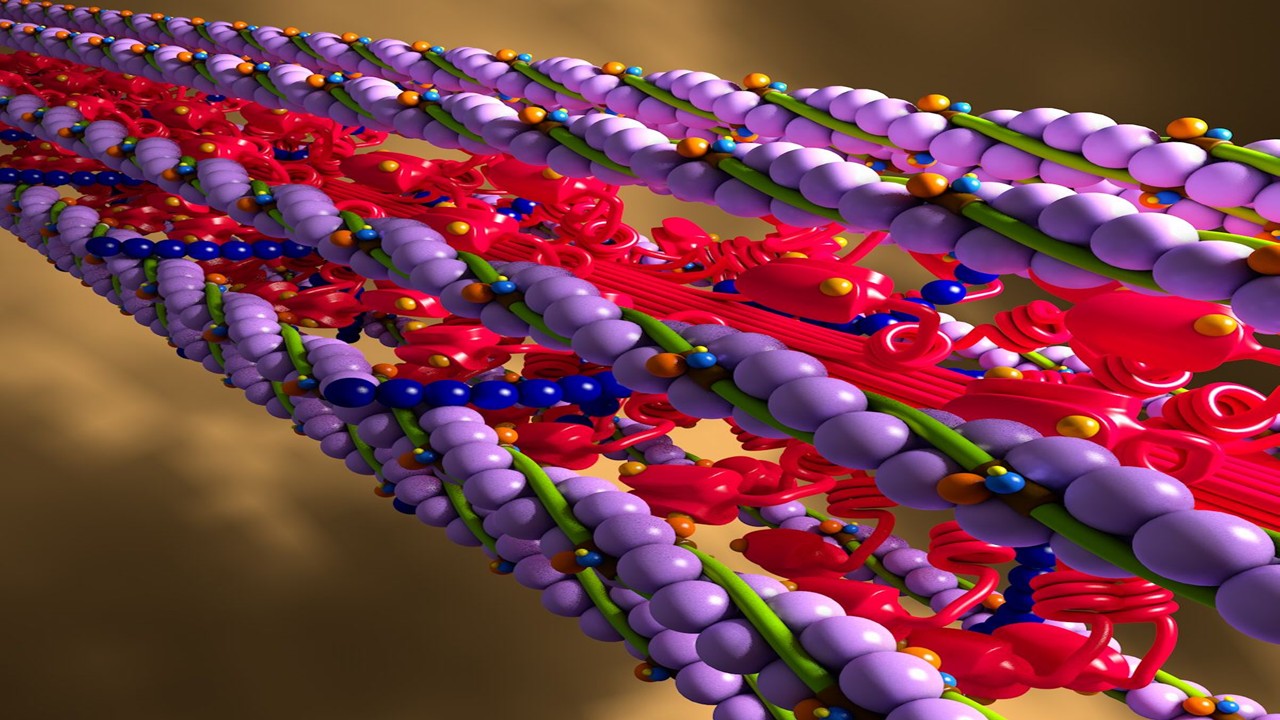The Cartography of Curiosity: Charting What We Know—And What We Don’t
Science has long been a cartographer of the unknown, sketching intricate molecular landscapes in the hope of illuminating therapeutic terrains. Yet, despite the vast expanse of the human genome, biomedical research remains lopsided—intensely clustered around a modest subset of familiar targets. This disproportionate focus has inadvertently cast a long genomic shadow over thousands of proteins, many of which may hold the keys to tomorrow’s therapies. It was in this context that the U.S. National Institutes of Health launched the Illuminating the Druggable Genome (IDG) initiative, a program designed to systematically expose the lacunae in our proteomic understanding and re-balance the focus of biomedical inquiry.
At the heart of IDG lies the effort to rationalize how we classify and prioritize proteins for drug discovery. This is not merely about access to data, but rather about constructing a framework that allows meaningful interpretations from heterogeneous sources—ranging from expression datasets and chemical assays to disease associations and phenotypic profiles. By establishing a knowledge management ecosystem that integrates both high-quality, low-volume evidence like crystallographic structures, and high-volume, noisier data like genome-wide screens, the IDG initiative represents a bold effort to tame informational entropy.
The philosophical underpinning of IDG’s approach is its redefinition of “knowledge” as a structured consensus of information with interpretative depth. While data are fleeting and perishable, knowledge accrues across experimental repetitions, consistency checks, and expert judgment. This model resists the temptation to equate data volume with insight, instead urging investigators to distinguish between meaningful signal and contextual noise—especially when working with proteins lacking prior study.
The operational backbone of this initiative is the Target Central Resource Database (TCRD), accessed via Pharos—a search interface and API portal that provides researchers with multimodal tools to explore the entirety of the curated proteomic landscape. Unlike more narrowly focused systems, Pharos is designed for panomic synthesis, incorporating everything from antibody availability and molecular probes to mechanistic associations and drug affinities. This scaffolding enables a more democratic exploration of proteins, including those classified in the initiative’s most enigmatic category: Tdark.
The result is a high-resolution map of the proteome’s illuminated and obscure territories. Proteins are assigned to four Target Development Levels (TDLs)—Tclin, Tchem, Tbio, and Tdark—based on the depth and type of biological, chemical, and clinical evidence available. Each of these categories serves as both a knowledge marker and a call to action, compelling researchers to either deepen understanding or shift paradigms.
TDLs as Epistemic Coordinates: Navigating the Spectrum from Known to Unknown
The TDL classification provides more than just academic sorting—it reorients scientific attention across a spectrum of evidentiary richness. Tclin proteins, comprising the clinical zenith of the framework, are those with validated mechanisms of action involving at least one FDA-approved drug. These proteins are the crown jewels of pharmacological research, often supported by exhaustive in vitro and in vivo data linking their modulation to therapeutic effects. Despite this, they represent only a sliver of the proteomic corpus.
Tchem proteins, by contrast, have yet to be pharmacologically crowned but show promising interactions with bioactive small molecules. Their inclusion in this category depends on precise bioactivity thresholds—cutoffs that vary depending on protein class. Importantly, many Tchem proteins are the subject of active clinical trials, indicating their transitional status within the drug development pipeline. However, they remain largely unvalidated in terms of direct therapeutic efficacy.
Tbio proteins exhibit a rich tapestry of biological relevance—spanning Mendelian disease links, Gene Ontology annotations, and an abundance of literature references—yet lack the chemical or clinical depth needed for elevation into higher TDLs. These are often known unknowns, offering promising biological insight but few viable drug entry points, and their stagnation is frequently due to the absence of molecular tools rather than lack of scientific interest.
Tdark proteins are proteomic enigmas. While their sequences are curated and their existence confirmed, they remain devoid of substantial functional or chemical characterizations. These proteins are underrepresented in research grants, patents, and scientific literature. The knowledge gap is not just a bibliometric curiosity—it’s a bottleneck that limits the diversity and novelty of therapeutic targets, as the proteomic “bright spots” receive disproportionate resource allocation.
Quantitatively, the IDG initiative estimates that nearly a third of the human proteome falls within the Tdark category. When normalized across various evidence types—such as NIH R01 grants, PubMed references, patent activity, and antibody availability—Tdark proteins consistently exhibit the lowest scores. This asymmetry reflects not only gaps in knowledge but systemic biases in research funding, publication practices, and risk-aversion among investigators.
Systems That Illuminate: Pharos, Harmonizome, and the Data Integration Imperative
The translation of disjointed data into coherent knowledge requires not just repositories, but interpretive engines. Pharos serves this function as a user-friendly but computationally powerful interface to the TCRD, enabling customized queries and dossier creation that link proteins with bioactivities, disease phenotypes, and chemical interactions. Pharos doesn’t just serve up data; it curates context.
Harmonizome is an equally critical pillar. This relational database contains millions of gene–attribute associations synthesized from over a hundred experimental sources. By abstracting data into vector representations, it becomes possible to compute normalized availability scores for each protein—a kind of “visibility index” that supports comparative analyses. Harmonizome also enables gene–gene and attribute–attribute network visualizations, adding a systems-biology dimension to traditional target selection.
The integration challenge is profound. Biomedical data are heterogeneously structured, variably annotated, and often siloed by institutional or technological boundaries. The IDG initiative circumvents this through algorithmic reconciliation, metadata standardization, and multi-tiered validation processes. While some resources focus on single domains—like DrugBank for pharmacological information or UniProt for protein structures—IDG aims for universality.
The synergy between Pharos and Harmonizome offers unprecedented granularity in proteomic exploration. It allows researchers to interrogate not only the molecular signature of a protein but also its experimental and clinical provenance. Importantly, these platforms lower the barrier to entry for investigating Tdark and Tbio proteins, transforming them from inscrutable sequences into hypothesis-generating entities.
This capability is amplified by other linked resources, such as DrugCentral and the Drug Target Ontology. DrugCentral brings pharmacological context to molecular data, while the ontology layer allows semantic organization of proteins by their biochemical roles and therapeutic relevance. These systems form a constellation of interoperable tools that together illuminate vast swaths of previously neglected proteomic real estate.
From Commercial Gold to Scientific Shadows: Funding, Patents, and the Economics of Ignorance
In modern drug discovery, commercial metrics often drive scientific curiosity as much as, if not more than, biological plausibility. This is clearly illustrated by the disproportionate global sales attributed to a narrow subset of protein targets. Tumor necrosis factor (TNF), for instance, stands at the pinnacle of economic value, targeted by high-revenue drugs like adalimumab and etanercept. These commercial outcomes, however, often correlate poorly with public research funding, revealing a profound misalignment between what society pays for and what academia chooses to explore.
Analysis of National Institutes of Health (NIH) R01 grant data shows a skewed distribution of funds. While proteins like the estrogen receptor receive both high sales and research funding, others, despite significant therapeutic value, remain severely underfunded. Even more striking are the thousands of proteins with no NIH-funded studies between 2011 and 2015, many of which belong to the Tdark category. These figures point to systemic neglect rather than inherent unimportance—a signal that funding ecosystems reward precedented rather than pioneering science.
Patents mirror these trends. Proteins in the Tclin and Tchem categories are heavily referenced across drug patent literature, while Tdark and Tbio proteins are conspicuously absent. This patent void isn’t just an administrative curiosity—it restricts translational momentum and diminishes the probability of investment from pharmaceutical stakeholders, who often equate patent frequency with target viability.
A deeper dive into commercial value reveals that G protein-coupled receptors (GPCRs), kinases, and cytokines dominate the financial landscape. GPCRs alone command nearly a third of the five-year aggregated drug revenue. This highlights not only their therapeutic efficacy but also the inertia of the pharmaceutical industry toward well-trodden molecular ground. The result is a feedback loop: financial return dictates research interest, which in turn begets more funding and publications, further widening the gulf between the studied and the ignored.
This economic echo chamber reinforces a form of epistemic monoculture in the life sciences. The IDG initiative, by tracking TDL assignments and correlating them with commercial and academic data, exposes these biases with quantitative precision. More importantly, it offers a scaffolding to reallocate attention, encouraging both researchers and funders to explore proteomic terrain that lies beyond today’s headlines—and tomorrow’s revenue streams.
Case Studies in Obscurity: How Darkness Became Illumination
Even among the shadows, some proteins have made the journey from obscurity to prominence. Retrospective analyses of several now-clinically validated targets reveal that many began their journey as Tdark proteins. Through a combination of receptor deorphanization, protein–disease association studies, and serendipitous discoveries, these targets ascended into therapeutic relevance.
Take the leptin receptor (LEPR). Initially a member of the genomic wilderness, it gained therapeutic relevance after pivotal studies revealed its central role in lipodystrophy, leading to the approval of metreleptin. Similarly, the smoothened receptor (SMO), once uncharacterized, became the target of vismodegib, a drug for basal cell carcinoma. These transitions underscore that the darkness of the proteome is not synonymous with therapeutic irrelevance—it merely reflects the present limitations of our inquiry.
The timeline of these transitions—often spanning over a decade—also highlights the patience and persistence required to study under-characterized proteins. Scientific curiosity, funding commitment, and tool availability converge to create inflection points in target development. The IDG’s TDL classification offers a vocabulary to measure and monitor these progressions, providing researchers with both a rationale and a roadmap for riskier, longer-term scientific investments.
What these cases also reveal is a core feature of translational research: the presence of a causal lag. Today’s Tdark may be tomorrow’s Tclin, not by virtue of technological serendipity but by deliberate, structured inquiry that interrogates gene function, phenotypic associations, and therapeutic potential. Indeed, the IDG archive provides a forensic lens to identify early signs of this transition, such as preliminary disease linkage or limited antibody availability, that may portend future druggability.
However, such promotions remain rare. As data from the Target Central Resource Database show, the vast majority of Tdark proteins have yet to receive serious investigational attention. Even among those with confirmed expression and some disease relevance, the lack of molecular probes—like high-affinity ligands or phenotypic screening tools—ensures their continued marginalization. The conclusion is clear: illumination requires infrastructure, investment, and intellectual courage.
GPCRs in Focus: The Crowned Kings of Druggability
No other protein family enjoys the pharmacological prominence of the G protein-coupled receptors. These membrane-anchored signaling hubs are central to human physiology and pathology, with roles in virtually every organ system. Approximately one-third of all FDA-approved drugs exert their action via GPCRs, making them the archetypal druggable targets. Yet, not all GPCRs are equally understood—or equally explored.
Among the 827 GPCRs tracked by the IDG, 96 are categorized as Tclin and 113 as Tchem, with the remainder split between Tbio and Tdark. The latter includes non-olfactory GPCRs with scant chemical or biological characterization. These receptors, while not the subject of frequent publications or drug development programs, are increasingly being mapped using high-throughput screening platforms and phenotypic mouse models. Their integration into IMPC pipelines has yielded early signals of neurological and behavioral relevance.
One clear pattern emerges: GPCRs that interact with known neurotransmitters or hormones dominate the Tclin landscape. Biogenic amine receptors, muscarinic receptors, and opioid receptors represent the most extensively studied GPCR subsets. This reflects both their pharmacodynamic tractability and their clinical indispensability. However, off-target interactions within this class are also common, resulting in adverse events such as cardiac valvulopathy—underscoring the need for refined specificity in drug design.
Structure-guided drug discovery has revitalized GPCR pharmacology. With an expanding library of crystal structures and binding site models, cheminformatics is increasingly being used to probe understudied GPCRs. Moreover, some Tdark GPCRs have revealed significant disease associations via GWAS and text-mined sources, further emphasizing their potential as future therapeutic targets.
In sum, the GPCR landscape is bifurcated—intensively studied on one end, deeply neglected on the other. The IDG’s classification scheme, combined with modern discovery tools, provides a way to traverse this gap. With sufficient data accumulation, even the most obscure GPCRs can emerge as viable drug targets, altering the therapeutic topography in profound ways.
Kinases in the Crosshairs: Bridging Structural Promise and Functional Mystery
Kinases—enzymes responsible for the phosphorylation of substrates—have long captured the attention of drug developers due to their pivotal roles in cell signaling, proliferation, and apoptosis. Their conserved catalytic domains and often well-characterized binding sites make them ideal for small-molecule inhibition. Yet, despite comprising a druggable superfamily of over 600 members, one-third of human kinases remain poorly characterized or completely unstudied. These Tbio and Tdark kinases represent an untapped reservoir of therapeutic promise.
Within the IDG framework, kinases have been stratified based on their level of evidence and characterization: 50 are classified as Tclin, 390 as Tchem, 163 as Tbio, and 31 as Tdark. The skew toward the chemical domain reflects intense medicinal chemistry activity, often targeting kinases involved in oncogenic pathways. However, the vast array of remaining kinases with undefined roles, poor assayability, or minimal biological annotations illustrates how even structurally “druggable” families can remain underexploited.
The disconnect lies in contextual biology. Many understudied kinases lack clear integration into known signaling networks or disease phenotypes. The absence of validated antibodies, RNAi tools, or CRISPR-ready models further dampens the translational momentum. Unlike Tclin kinases—frequently supported by robust pharmacodynamic datasets and disease correlations—Tdark kinases are often little more than names in a database, despite occasional genomic amplification signals in datasets like The Cancer Genome Atlas (TCGA).
Yet, even among these obscure kinases, functional relevance emerges when interrogated under specific contexts. For example, kinases like TRIB1 and RPS6KC1 show frequent alterations in triple-negative breast cancer (TNBC), suggesting their unexplored involvement in oncogenic phenotypes. Experimental evidence from transcriptomic responses to kinase inhibitors such as trametinib also implicates these kinases in dynamic cellular adaptations, indicating their potential as modulators of drug resistance or disease relapse.
As kinase drug discovery matures, approaches such as covalent inhibition, allosteric modulation, and degrader technologies (e.g., PROTACs) open new therapeutic avenues, even for kinases previously considered undruggable. These strategies may overcome the limitations imposed by shallow binding pockets or redundancy within the kinome. However, to realize their full potential, basic functional mapping—phenotypic data, expression patterns, and regulatory mechanisms—must first be unearthed. The IDG initiative offers a structured lens through which to prioritize this discovery process.
Conducting the Ion Symphony: Channelopathies, Modulators, and the Unknown
Ion channels serve as the molecular wiring of cellular excitability, orchestrating the electrochemical rhythms of the brain, heart, pancreas, and beyond. They are implicated in an array of pathologies known as channelopathies—ranging from epilepsy to cardiac arrhythmias and diabetes. Their intrinsic responsiveness to small molecules makes them particularly attractive drug targets. Yet, beneath their well-known pore-forming subunits lies a constellation of auxiliary units and lesser-known isoforms, many of which remain cloaked in mystery.
According to the IDG’s TCRD, 355 ion channel proteins are currently tracked, with 126 classified as Tclin or Tchem. While many of these are associated with well-established drugs like lidocaine, amlodipine, or ketamine, 35 channels remain in the Tdark category. These proteins often evade characterization due to their context-specific activity, tissue-restricted expression, and functional redundancy with paralogs. Compounding this is the lack of scalable platforms capable of reconstituting the physiological environment required for accurate channel function assessment.
The challenge is not merely one of missing data but of conceptual and technical bottlenecks. Ion channels do not lend themselves to the same type of high-throughput screening as soluble enzymes or GPCRs. Their behavior is governed not only by ligand binding but also by voltage changes, lipid environments, and accessory proteins, making functional readouts far more nuanced. This complexity delays illumination and relegates many channel subunits to the proteomic periphery.
Nonetheless, recent research has begun to elucidate these shadowed proteins. Subunits like LRRC8 and ORAI—previously deemed uncharacterizable—are now understood to form volume-regulated anion channels (VRACs) and store-operated calcium entry systems, respectively. These revelations have prompted a re-evaluation of Tdark annotations within the ion channel family and opened new lines of inquiry into poorly characterized homologs.
Moreover, off-label drug effects have inadvertently illuminated novel ion channel mechanisms. The antidepressant effect of ketamine, for example, was initially attributed to NMDA receptor antagonism. However, subsequent studies revealed that its metabolite acts via AMPA receptor modulation—redefining not just the mechanism of action but also the therapeutic rationale. This example underscores how pharmacological curiosity can be a powerful force in uncovering novel biology, even when conventional screens fail.
The Genetics of Silence: Mouse Models, Expression Studies, and Behavioral Phenotypes
At the frontier of illumination are the mouse models—laboratories of living systems wherein the consequences of genetic manipulation are observed with unparalleled clarity. The International Mouse Phenotype Consortium (IMPC), in collaboration with the IDG, has prioritized the generation of knockout lines for druggable yet understudied genes. By mapping these phenotypes to human orthologs, the initiative lays the foundation for linking Tdark proteins to disease-relevant biology.
As of late 2017, over 568 knockout strains had been developed across GPCRs, ion channels, kinases, and nuclear receptors. Phenotypic readouts span multiple biological systems—metabolic, immunological, developmental—providing an entry point into the functions of proteins once known only by sequence. Notably, 45 Tdark genes yielded observable phenotypes in mouse models, some with direct parallels to human pathologies. These include embryonic lethality, skeletal malformations, and reproductive deficits.
The data do not merely offer functional clues—they challenge the prevailing assumption that Tdark proteins are biologically irrelevant. In truth, their obscurity is a byproduct of experimental neglect. The mouse models reveal that when studied under appropriate contexts, even the most cryptic proteins unveil crucial physiological roles, often linked to behavioral, neurological, or cognitive domains.
Integrative expression datasets such as GTEx, HPA, and HPM further contextualize these findings. Nearly all Tdark and Tbio genes with mouse phenotypes also show confirmed expression in human neuro-relevant tissues. These expression patterns, combined with phenotypic data, suggest that the majority of Tdark proteins are not merely “missing information”—they are miscategorized potentials, awaiting systematic investigation.
Yet a paradox persists. The fewer the molecular tools available—antibodies, ligands, structural models—the less likely a protein is to be studied. This leads to a cycle of neglect, whereby lack of knowledge begets lack of interest. The IDG and IMPC’s coordinated effort represents an active intervention in this cycle, offering empirical proof that darkness is often a placeholder, not a final verdict.
Redrawing the Boundaries of the Druggable
The IDG initiative is more than a proteomic census—it is a philosophical call to action. By exposing the asymmetries of attention in biomedical research, it compels us to confront the possibility that our drug discovery frameworks may be less about biological necessity and more about historical convenience. In a world brimming with data yet constrained by funding inertia and risk aversion, the TDL classification system offers a rational compass for navigating uncharted molecular territories.
The proteomic darkness is not empty. It is rich with uncharacterized function, latent therapeutic potential, and untapped biological narratives. Illuminating it requires more than new tools—it demands a recalibration of scientific priorities, a willingness to invest in uncertainty, and an appreciation that true discovery often begins where the light runs out.
What remains is a commitment to infrastructure, integration, and intentional exploration. With resources like TCRD–Pharos, Harmonizome, and DrugCentral, and with initiatives like IMPC generating phenotypic evidence at scale, the tools now exist to probe the unknown with unprecedented precision. It is up to the research community to wield them—systematically, courageously, and without prejudice.
As William Gibson aptly put it, the truth is already here. It’s just not evenly distributed. Neither is our knowledge of the proteome. But with coordinated effort, informed curiosity, and a willingness to study the unexplored, we may yet balance the scales—and in doing so, redefine the future of medicine.
Study DOI: https://doi.org/10.1038/nrd.2018.14
Engr. Dex Marco Tiu Guibelondo, B.Sc. Pharm, R.Ph., B.Sc. CpE
Editor-in-Chief, PharmaFEATURES

Subscribe
to get our
LATEST NEWS
Related Posts

Medicinal Chemistry & Pharmacology
Invisible Couriers: How Lab-on-Chip Technologies Are Rewriting the Future of Disease Diagnosis
The shift from benchtop Western blots to on-chip, real-time protein detection represents more than just technical progress—it is a shift in epistemology.

Medicinal Chemistry & Pharmacology
Designing Better Sugar Stoppers: Engineering Selective α-Glucosidase Inhibitors via Fragment-Based Dynamic Chemistry
One of the most pressing challenges in anti-diabetic therapy is reducing the unpleasant and often debilitating gastrointestinal side effects that accompany α-amylase inhibition.

Medicinal Chemistry & Pharmacology
Aerogel Pharmaceutics Reimagined: How Chitosan-Based Aerogels and Hybrid Computational Models Are Reshaping Nasal Drug Delivery Systems
Simulating with precision and formulating with insight, the future of pharmacology becomes not just predictive but programmable, one cell at a time.

Medicinal Chemistry & Pharmacology
Coprocessed for Compression: Reengineering Metformin Hydrochloride with Hydroxypropyl Cellulose via Coprecipitation for Direct Compression Enhancement
In manufacturing, minimizing granulation lines, drying tunnels, and multiple milling stages reduces equipment costs, process footprint, and energy consumption.
Read More Articles
Myosin’s Molecular Toggle: How Dimerization of the Globular Tail Domain Controls the Motor Function of Myo5a
Myo5a exists in either an inhibited, triangulated rest or an extended, motile activation, each conformation dictated by the interplay between the GTD and its surroundings.











